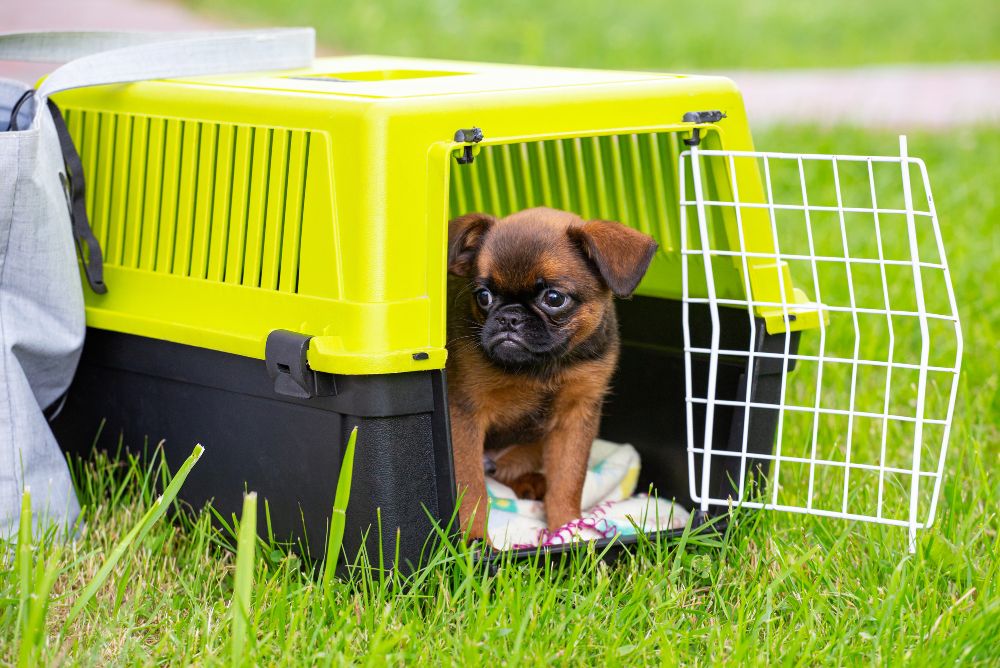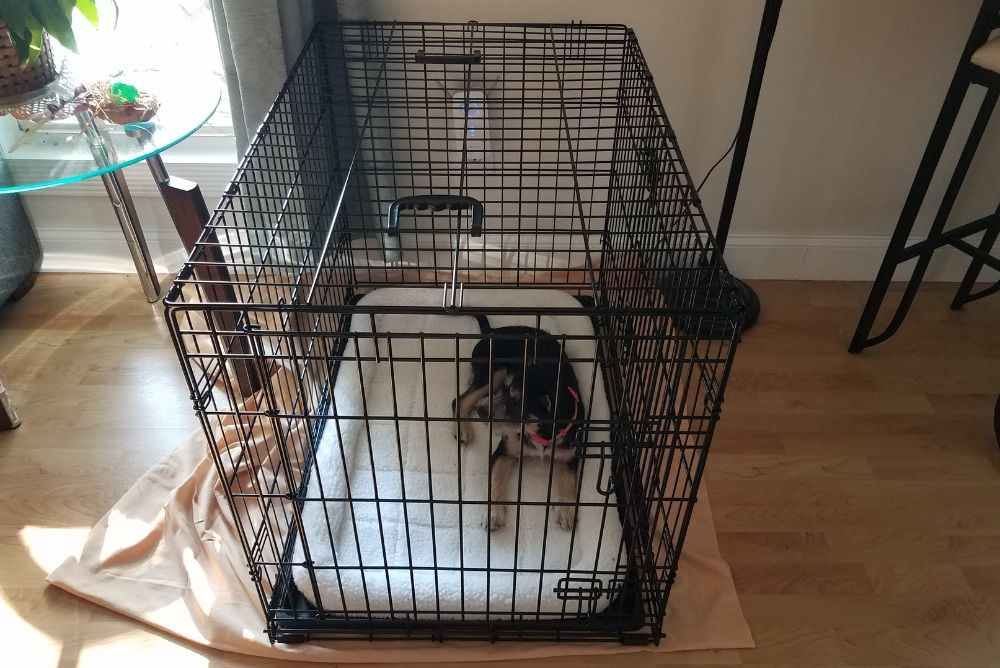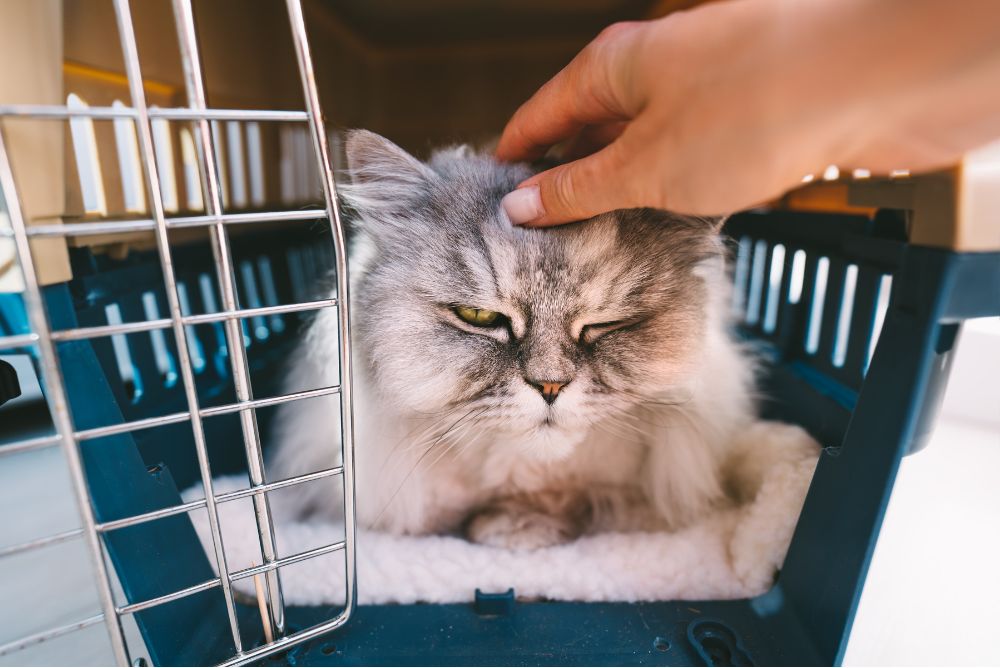Sometime in your pet parent career, you’ll likely encounter the pet carrier vs crate debate.
Cats and dogs need a safe and comfortable space for transport, training, and habitation. Crates are sturdy, but are they necessary for local travel and trips to the vet? On the flip side, how reliable are carriers for long-distance travel and are they a good safe space for my pet?
Breaking Down the Differences
Pet carriers and crates serve different purposes. Your purchase depends on your kennelling needs.
Pet Carriers: Light and Mobile



Pet carriers are the lightweight and low-key option. Carriers are constructed from nylon and other soft and flexible materials. There are also plastic carriers with hard shells. Most carriers come with soft inner linings to ensure your pet is snug and comfortable.
As their name suggests, carriers are easy to carry. They come with shoulder straps or handles made of nylon or leather. Some carriers are even designed as backpacks with double shoulder straps. Alternatively, you might prefer a single strapped, pet sling.
The average pet carrier is around 11 inches tall and wide, and 18 inches long. They often have multiple zippered pouches for storing accessories like your pet’s collar. Many have zipper locks so your furry friend stays out of trouble. Carriers have top and side openings, or both, making it easy to get your pet inside. Many dog and cat carriers have fashionable designs and decorations.
On average, pet carriers are less expensive than crates. A simple carrier retails as low as $20 USD, providing a stable platform, synthetic walls, and a shoulder strap or handles. More expensive carriers feature backpack and sling designs and luxury models with dual compartments, divider panels, and expandable sections.
As for airline travel, most travel carriers are acceptable as one of your carry-on items as long as they follow airline size requirements. This is a huge money-saver for people who travel with their pets.
Pet Carrier Pros
- Generally made of lightweight, soft materials
- Easy to carry
- Stylish
- Accepted as carry-on for airline travel
- Affordable
- Great for road trips; Will fit in the backseat of a car
Pet Carrier Cons
- Less safe for train, plane, or car travel
- Not suitable for larger pets
- Less room
- Not effective for training or use as a safe space for your pet
The Verdict:
Pet carriers are a perfect choice for people with smaller pets like cats or small dogs. If you have cats or puppies, it’ll be no problem popping them into their soft carriers. Then, you’re off to the vet, a friend’s place, or to catch a flight with no hesitation.
You might want to rethink, however, if your puppy will eventually grow out of its dog carrier, or if you have a large dog. Carriers only keep your pet secure if they fit well and fully protect them. Generally, carriers should have enough room for your cat or dog to comfortably turn around, curl up, and stretch out. It all depends on the cat or dog’s size.
Pet Crates: Sturdy and Multifunctional



Many pet parents are looking for more than a means of safe transportation. They also want a familiar place for their pet for crate training or a place to sleep at night. Pet crates shine in these circumstances when they double as pet homes and transportation devices.
Crates provide pets a den like space where they feel safe and calm. This is a perfect sleeping space, or somewhere to go when they are nervous or agitated. Many people choose soft sided crates so their pet will be as comfortable as possible.
Crates are the simple solution to traveling with your pet. If you store an animal in plastic crates, wire crates, or any other hard sided carriers, your pet will be better protected from any disturbance.
The price range for crates starts at around $50 and climbs to $300 for more high-end models. They can be made of wire, fabric, wood, or a combination of these materials. Most crates are box-shaped and have a swinging door at one side. Some models have multiple doors and others are designed like a dog house or a piece of furniture such as a side table.
With plenty of room and stable construction, it’s easy to add accessories to your crate. Many owners attach fans, pet food and water bowls, wheels, mats, and replacement pans. There are also crates with multiple compartments for people with several pets.
Pet Crate Pros
- Durable and spacious
- Secure for all types of travel
- Suitable for larger dogs or growing puppies
- Accommodates any size of dog or cat
- Provides a safe place
- Facilitates crate training and long-term kennelling
Pet Crate Cons
- More expensive than carriers
- Require more cargo area
- Made of harder, less comfortable materials
- Bulky and difficult to carry
The Verdict
For many dog owners, crates are a standard. They’re also the norm at dog kennels. Crates can be part of a dog’s lifestyle, providing a comfortable and stable area to rest. Crates are also a secure solution for aggressive dogs who need ample restraint. For both dogs and cats, you can rest easy traveling with your pet safely crated in their comfortable abode.
That being said, crates are a pain to lug around. Plus, they might be more protection than you really need. Barring large pet owners, if you’re looking for sheer convenience, crates aren’t the best option for your best friend.
Decision Time: Crate or Carrier?
The decision is up to you, your lifestyle, and your needs. If you’re frequently traveling with a small pet and love versatility, carriers are a great option. The right carrier is convenient and comes at a low cost.
In the other corner, we have crates: the stalwart, at-home, safe space, and long-distance travel vestibule. The right crate is spacious, stable, and easily customizable. They can facilitate crate training, and give pets a cozy place to sleep.
FAQs
Is a pet carrier the same as a crate?
No. Pet carriers are made of soft materials and are best for small pets. Crates are largely made of hard materials and double as both pet transport devices and pet safe spaces. Carriers are singly purposed for pet transportation.
Do I need a pet carrier?
Pet carriers are recommended to those traveling significant distances with their pets. Carriers make it easier to move your animal and keep them safe. It’s important to note, however, that carriers are not mandatory for vet visits.
Pet Van Lines offers reliable and stress-free nationwide ground transport for dogs, with drivers trained in reducing dog anxiety. Get a free quote now for your dog’s safe transportation.

